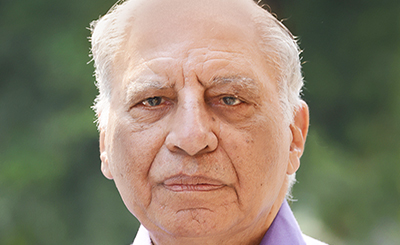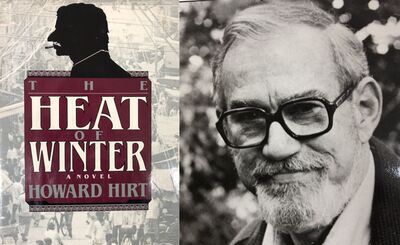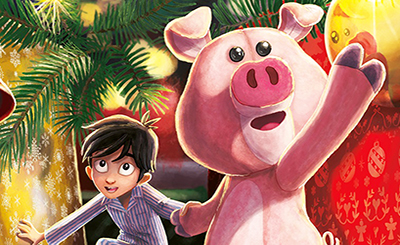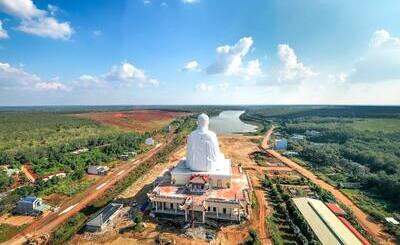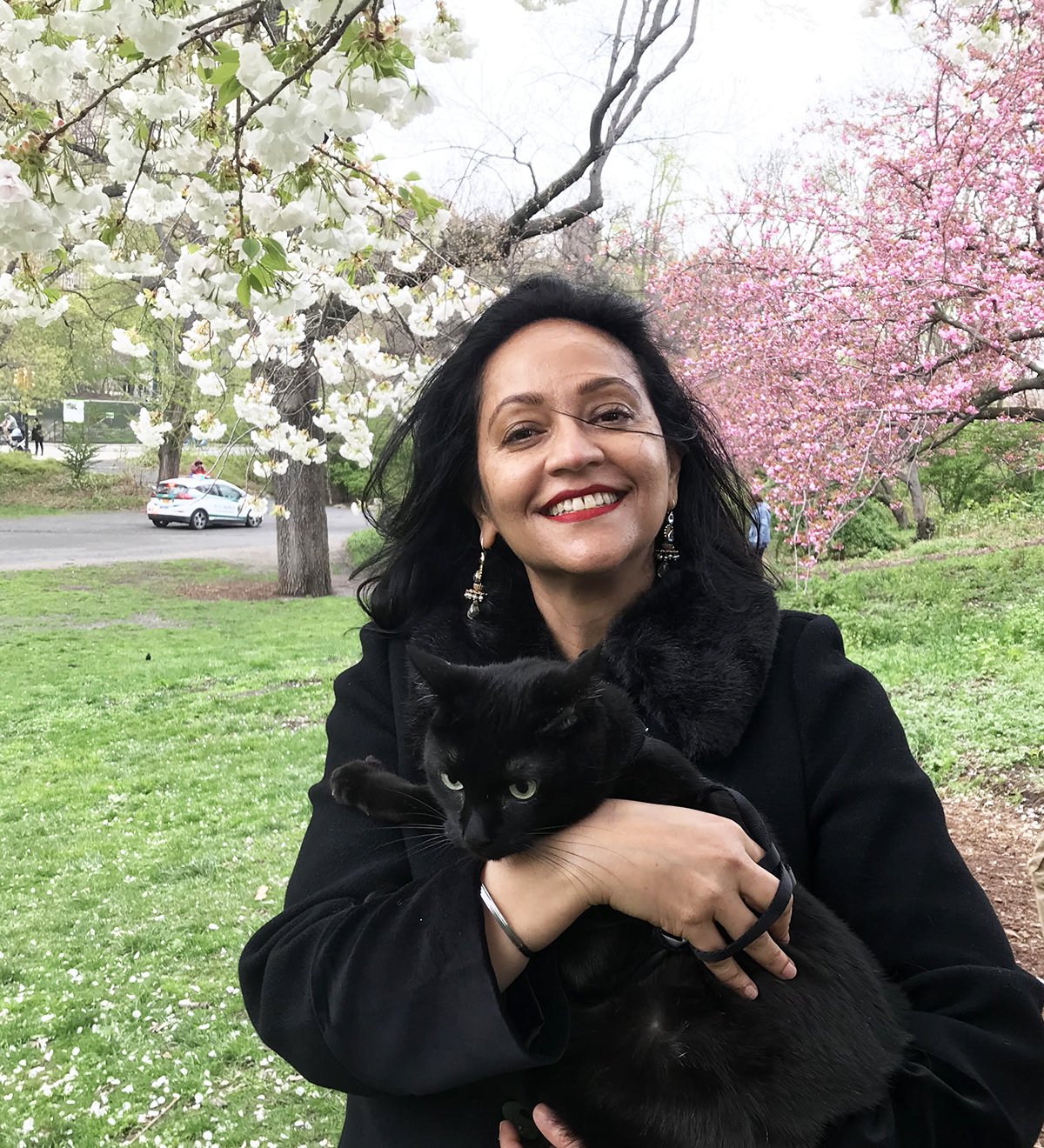
Manreet Sodhi Someshwar. Photos courtesy of the author
The New York-based author on her novel, The Radiance of a Thousand Suns, and why past is never past
“History was alive and entangled in the everyday stories of India, and it needed to be coaxed onto the pages of a book. In that sense, history was a woman, substantial, vigorous, complex and always given the customary short shrift,” writes New York-based author Manreet Sodhi Someshwar at some point in her fifth novel, The Radiance of a Thousand Suns (HarperCollins). With her latest book, Someshwar does exactly the same: coaxing history — in all its violence and vigour — onto the pages of a novel. The history that finds way into her narrative concerns itself with the private, individual pain of men and, especially, women, who are at the centre of devastating, epochal events.
Niki Nalwa, the protagonist, is carrying the burden of her father’s unwritten book, titled The End of Silence: Survivor Stories from the Partition of 1947 and the Pogrom of 1984. Niki’s initiation into writing happens while she transcribes her father Jinder Nalwa’s notes from his interviews with survivors of the Partition. In the novel, Someshwar writes with tremendous sensitivity, and rage, about people caught in the vortex of communal conflagration at crucial moments in history, and the general indifference to the holocausts in the Indian subcontinent in 1947 and 1984, and the ravages of the Emergency. She lingers over a million wounds of the survivors of tragedies, who, with pain seared into their memory and stamped upon their hearts, remain on the margins of history.
In Someshwar’s fiction, the past intrudes upon the present all the time, just like in real life, or like the way it happens in Mahabharata, the epic the author draws upon, and which she describes as akin to an ancient banyan tree, “with its primary trunk propped by motley aerial roots like scripture, philosophy, folklore, side stories and legends” — there are stories within the stories. The Radiance of a Thousand Suns — a "multi-decade, multi-continent narrative, told in multiple voices” — is a splendid evocation of the past, and an exhortation to learn from the blunders of history and carve out a better present and even better future.
In this interview, Someshwar says that history has been her muse. “Indian history has vintage, is vast, diverse, tumultuous. The history of independent India, however, has literally been ‘his’ story. This novel attempts to reconstruct the (hi)story and add to it the missing, suppressed, and absent stories of women,” says Someshwar. In the novel, she says this through her character Niki: “Men’s stories become a society’s narrative and our heritage; women’s stories are forced underground, sealed and locked.”
The past, says Someshwar, is never past, in a Faulknerian sense. “Why, for instance, after 70-plus years of Partition, have we not been able to lay the ghosts to rest? In 1947, when women’s bodies became the battlefield, did that template of sexual violence derive from our foundational epic? Does the fact that women bore the brunt of that violence echo in this time of #MeToo? It’s questions such as these that are my entry point into history and literature,” she says.
Someshwar, in an essay she wrote for The Punch, traced the inspiration to write back to her father. “In some ways, it is an attempt to continue the conversations which halted abruptly when he passed away suddenly,” she says, adding that Bhalla saab of The Long Walk Home and Jinder Nalwa of The Radiance of a Thousand Suns are men she can see at a table with her father, sharing drinks and laughter, even as Mehdi Hassan or Jagjit Singh croon ghazals in the background. “I grew up in the eighties when Punjab was roiling in a home-grown militancy. It was an intensely polarising time when friends and families cleaved. I saw my father, a criminal lawyer, stubbornly tread the path of what was fair at a time when being partisan became a proclaimed virtue,” says the author, who is currently working on a set of novels that deal with the Independence and the Partition of India.
Excerpts from an interview:
Shireen Quadri: History, especially of the Mughal period, has been a subject close to your heart and your novels have been a manifestation of this. As a writer how do you engage with history?
Manreet Sodhi Someshwar: When you grow up in a border area, history is your virasat, your legacy. It is not handed down to you but comes to you via osmosis, through overheard conversations, sentences left unfinished, stories of yore. My dusty little cantonment town stands on the Indo-Pak border, Janus-faced. In a town neatly split between civilian and military areas, where the one constant source of entertainment is one quaint British tradition left behind after Independence: the “beating the retreat” ceremony at the border. Where we could gawk at Pakistanis across and realise, much to our astonishment, that they looked just like us.
Like any child, I ignored history until it chased me down. To Singapore. Where I was taking a sabbatical from corporate life in 2001. And images started to swim up, of a time that I had left behind, or so I thought… One memory led to another, then another, a labyrinth opening up for me to wade through. That period of my life came back to me with the kind of hi-fidelity reproduction enthusiasts wax about. To make sense of those memories, I started asking questions. My research took me back in time and it was the national library that became my haunt. Seven years later, I had a book: The Long Walk Home.
Ever since, history has been my muse. Indian history has vintage, is vast, diverse, tumultuous. My Mehrunisa trilogy novels leverage Mughal history, its peculiar syncretic aesthete, something which appeals to me immensely. The whole world is in love with the Taj Mahal. Most people, Indians included, however, know little about the monument except for its famed beauty and fabled love legend. There is a dearth of scholarly work — indeed, the Austrian historian Ebba Koch, 75, is the only one permitted to take measurements of the complex over her thirty-year research on the monument. The Taj Conspiracy (2012) was an attempt to rescue the Taj Mahal from petty fabrications that tourist guides throw up and show the monument for what it truly is: a symbol of syncretic India. To my surprise, the novel became a runaway bestseller. What’s gratifying is that readers still email me that they take my book along as a guide when visiting the Taj!
For me, the past is never past, in a Faulknerian sense. Why, for instance, after 70-plus years of Partition, have we not been able to lay the ghosts to rest? In 1947, when women’s bodies became the battlefield, did that template of sexual violence derive from our foundational epic? Does the fact that women bore the brunt of that violence echo in this time of #MeToo? It’s questions such as these that are my entry point into history and literature. Currently, I am at work on a set of novels that deal with the Independence and the Partition of India.
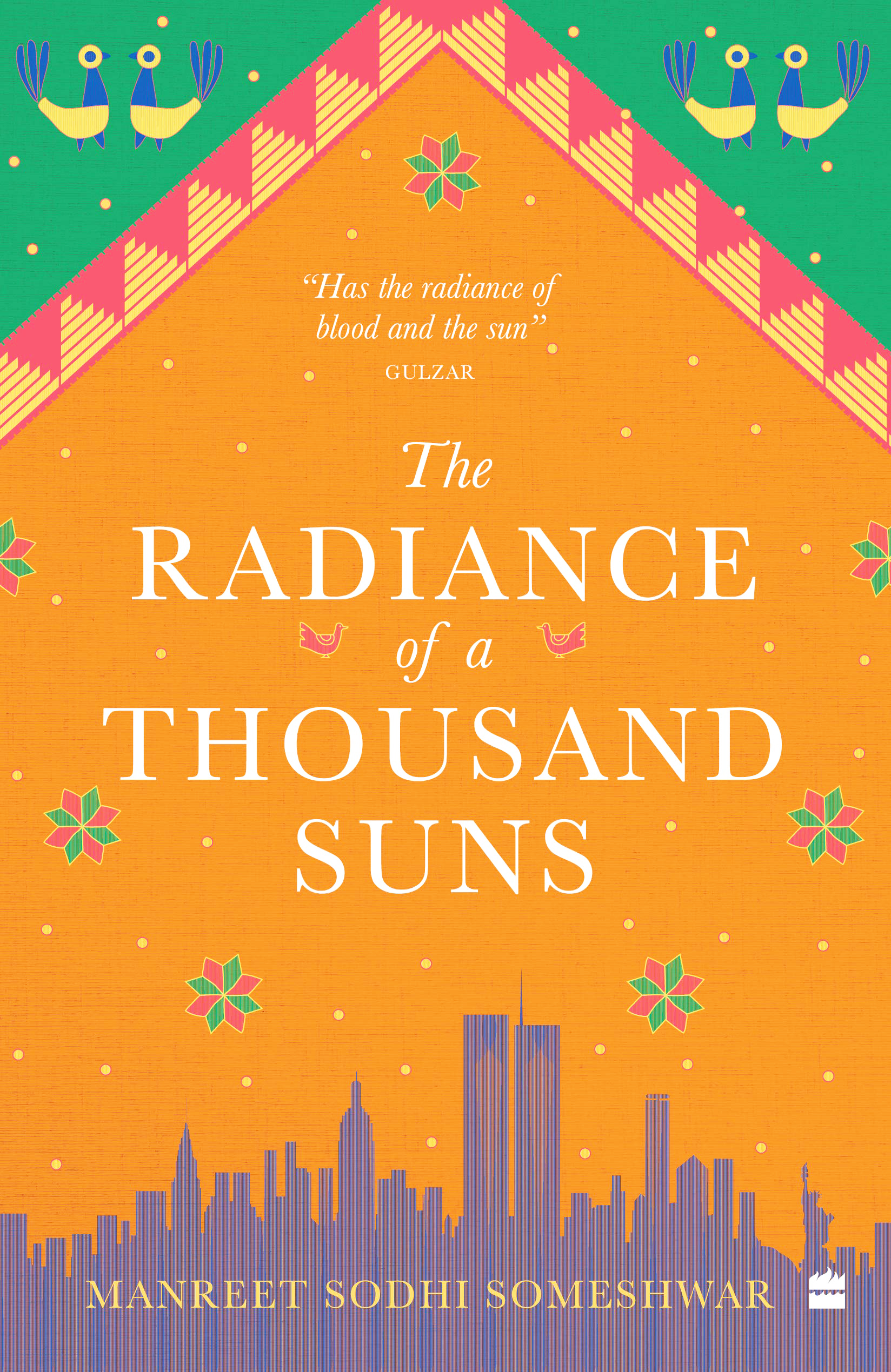
Shireen Quadri: In what ways do you see the past intersecting the present in your novels? What do these parallels tell us about the shared past of the Indian subcontinent and its current strained present?
Manreet Sodhi Someshwar: In India, the past is forever intruding upon the present. And yet, it is a syncopated vision of the past where the male narrative of nation-building is what is celebrated come every anniversary of India’s Independence. Meanwhile, the female narratives of pain, humiliation and shame have been submerged as if they never occurred. So, why not reckon with that past, I asked myself, and invited the dead to populate my latest (fifth) novel, The Radiance of a Thousand Suns (2019). The history of independent India has literally been “his” story. This novel attempts to reconstruct the (hi)story and add to it the missing, suppressed, and absent stories of women. As Niki says in the novel: “Men’s stories become a society’s narrative and our heritage; women’s stories are forced underground, sealed and locked.”
The Radiance… explores the impossible choices women are forced to make in the face of violence, the ties that connect them across ages, and the secrets they store. Heer is a leitmotif through the narrative, as is Draupadi. The fact is that despite being divided into a Muslim Pakistan and a Hindu-dominant India, the subcontinent has a shared cultural history of over two millennia. During the world wars, when Indian soldiers (irrespective of religion) wrote home from the trenches, they referred to the enemy airplanes as Garuda, for what else could explain the mighty machines that swooped in the air like Lord Vishnu’s eagle? At Partition, people in Punjab, across faiths, drew upon the Mahabharata to describe the agony and anguish of the time as pralaya (doomsday).
I believe that in order to grapple with the present, we must engage with the past. I don’t mean a rehash. What I have in mind is a close scrutiny of tradition, an exploration of homilies, a deep dive into myths so we can parse the narrative for our stories and question smug assumptions about “differences” amongst people bound by millennia of culture.
Shireen Quadri: The Radiance... is lucidly written and has a wide sweep, spanning the Partition, the 1984 riots and the atrocities of 9/11. Its narrative arc retraces the wounds of history and tracks the beginning of Sikh migration across the globe. Tell us about the process of crystallising the cataclysmic moments of history for this novel? How did you settle on its structure (naming the chapters after years, for instance)?
Manreet Sodhi Someshwar: The Radiance… is about Niki’s determination to complete her dead father’s unfinished book, his life’s work, which takes her from India to New York City. There, her pursuit of a mysterious immigrant woman turns into an obsession that begins to imperil her daughter, her marriage, and, eventually, Niki herself. When a blizzard blankets NYC, Niki finds herself on a path where the present and past collide violently. Interweaving the epic Mahabharata, the poetry of Bulleh Shah, and the legend of Heer, The Radiance… is a novel about the mythic and the intimate, about stories on tapestry and mobs that recur, about home and love and history and those heartbreaking moments when they all come crashing together.
The narrative spans the cataclysms of Partition and 9/11, via the brutality of Emergency and the pogrom of 1984, and stretches from India to New York. Admittedly, it is a broad canvas, one that I have wrestled with for many, many years. To echo that famous dialogue from the film Damini (1993): draft pe draft, draft pe draft, draft pe draft likhti gayi, par manuscript nahin mila (I kept writing draft after draft after draft, but the manuscript could not be traced). Since it’s a multi-decade, multi-continent narrative, and is told in multiple voices, I decided to use specific years as milestones. These years are also years that coincide with cataclysmic periods in our history.
It was a mammoth struggle until it all finally came together. Phew! But it would not have been possible without the countless books, academic articles, scholarly research papers and oral testimonies which provided me with a solid foundation upon which to build my novel. Historical fiction is a tricky beast and I am pernickety about historical authenticity, hence the two-step-forward-one-step-backward momentum of writing this book.
Shireen Quadri: At some point in the novel, you refer to the assertion of the right wing forces. How do you see this playing around the globe? How do you look at its ramifications in India?
Manreet Sodhi Someshwar: Right wing forces are resurgent across the world. We can speculate on the causes: Capitalism run rampant? A lashing out against the liberal order? Rising inequality? Similar forces are at play in India. But the right wing has always been an important lever in India. If we study the history of our freedom movement and the framing of the Constitution, we can see the battles being fought between liberal and conservative forces. We would do well to remember that the Partition of India did not come out of a vacuum. What remains to be seen is whether we have learnt enough from 1947 to prevent a recurrence?
Shireen Quadri: Religion, you write in The Radiance…, always boils down to a rulebook on how to control women. You have also touched upon crime against women, female foeticide, rapes and decrepit customs. How does a fiction writer approach the disturbing social realities?
Manreet Sodhi Someshwar: Through love. Let me explain.
All writing is political. Kafka’s dictum — A book must be the axe for the frozen sea within us — informs my impulse to take pen to paper. However, no story of trauma can be written without first writing about love. These tumultuous events sundered families, shattered friendships, destroyed communities — love and affection and camaraderie were the casualties. Which is why I tell these stories through the prism of love, lost and found. The Radiance… weaves the story of 70 years of independent India via a tapestry of relationships: a man’s lifelong search for his lost sister, a daughter’s determination to fulfill her father’s legacy, a woman’s desire to live her life with love despite her scarred past…
Shireen Quadri: What did the gross violence against women during Partition and the sectarian riots in 1984 tell about us as a society? Do you think it has only become worse today?
Manreet Sodhi Someshwar: The history of independent India is mostly a male narrative of freedom-fighting and nation-building. Meanwhile, the voices of women who bore the major brunt of the violence unleashed in 1947, both at the hands of their own menfolk and those of the overnight-enemy, have been erased. This has roots in the deep-seated patriarchy of Indian culture where family honour resides in women and sexual violence against women is, therefore, seen as dishonour to the family and its men. Ashis Nandy has suggested that much in the manner of Freud’s notion of ‘the narcissism of minor differences’ the hatred of the ‘Other’, and the necessity to obliterate the other may paradoxically stem from its sameness with the self, a need to annihilate a ‘difference’ that is part of the self, thus objectifying the other as ‘total other’. The novel suggests that in a patriarchal culture, women become the ‘other’, and are objectified thus, which legitimises sexual violence against them.
This template from the Mahabharata has been copy-pasted in every instance of violence, be it Partition or 1984, and has a direct relevance to the #MeToo movement of today. My novel explores how a society riven by a seemingly-unending spiral of violence needs to open up to the stories of its survivors and fold them into its national and social history. Until we do this, we will continue with the spiral of violence.
Shireen Quadri: Nooran, Jyot, Dadima, and Niki are four very well etched out, strong headed, opinionated and brave women. How did you develop each of these characters? What do you think shapes their lives and the choices they make?
Manreet Sodhi Someshwar: Thank you. I grew up amidst women who made me realise that Draupadi was alive and living amongst us. For a girl child in Punjab, there couldn’t have been better role models. I always tell my daughter: The power of the story lies in the hands of the storyteller. As women, we must dig them out, dust them off, dress them up, imagine them, grow them, tell them — Our stories.
As Niki observes in the novel: “Men’s stories become a society’s narrative and our heritage; women’s stories are forced underground, sealed and locked.” My intention with The Radiance… was to restore the narrative of independent India with the absent stories of women.
Nooran, Niki, Jyot, Dadima — each of my women is forced to make tough decisions in the face of violence. What sustains them is the connections they forge and the stories they share and pass on. Niki reminisces: “Like dust motes that are present in the air and become apparent in the chink of light breaking through a parted curtain, Nooran’s stories would remain in the ether of her life, to be plucked and re-plucked when needed… As long as there were stories to tell, there was a way to connect.”
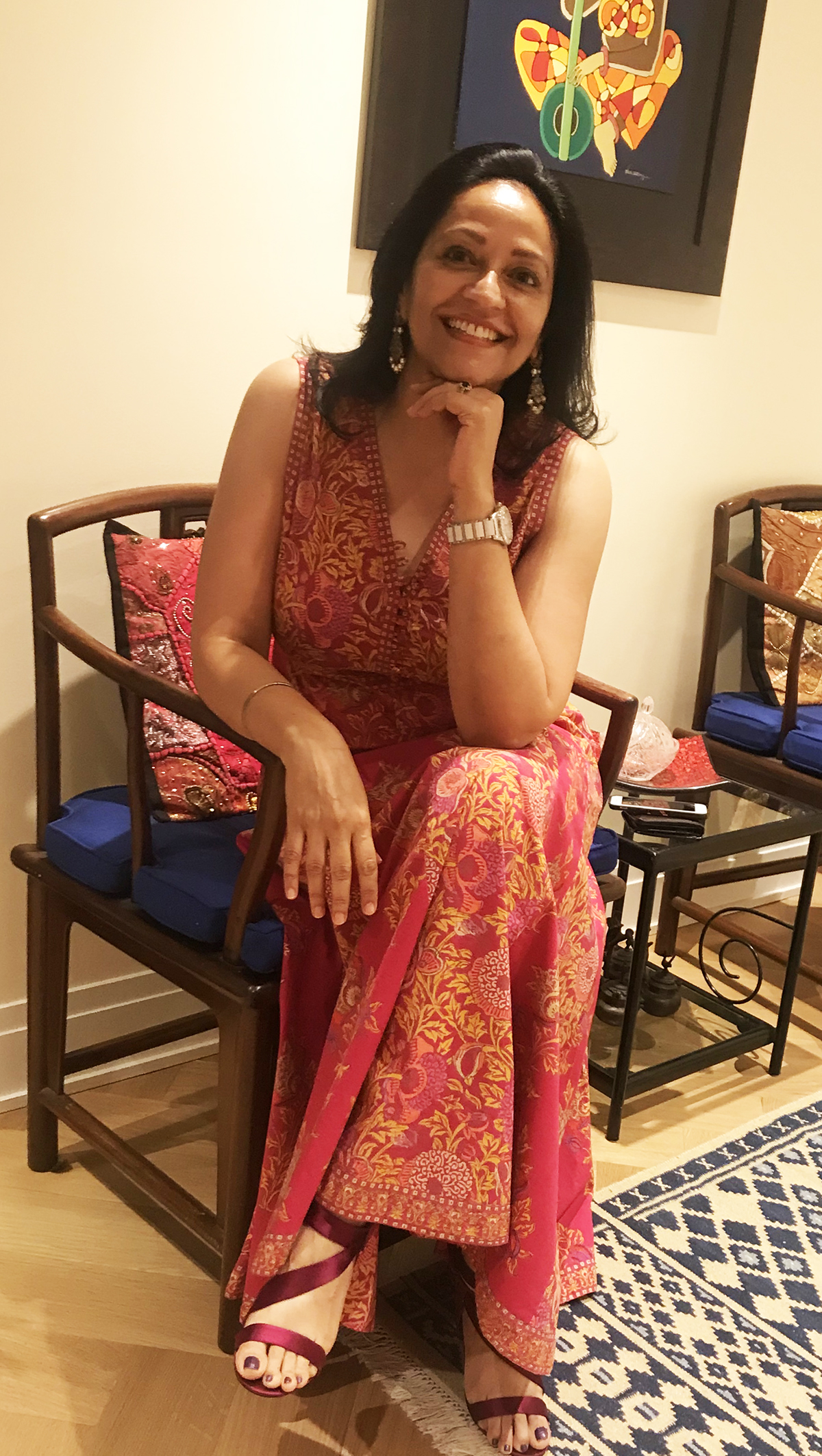
Shireen Quadri: Mehrunisa, the protagonist of The Taj Conspiracy series is, as you have earlier talked about, is the human metaphor of Taj — born of mixed heritage, perceived to be a foreigner in her own land and vulnerable. How did you go about fleshing her out? Do you think a woman like her is more vulnerable in the current state of affairs?
Manreet Sodhi Someshwar: In his speech at the Nobel banquet, the writer John Steinbeck (1902-1968) said something that resonates with me: “The ancient commission of the writer has not changed. He is charged with exposing our many grievous faults and failures, with dredging up to the light our dark and dangerous dreams for the purpose of improvement.” My research on Taj familiarised me with the fragile state of the monument, something I wove into the narrative to raise awareness of its alarming vulnerability in the face of increasing pollution, a depleting Yamuna river, and rising terror. However, there has been of late a concerted effort to portray the Taj as somehow not representative of Indian culture. When, indeed, the Taj Mahal is more symbolic of our heritage than we Indians realise. To borrow from a character in The Taj Conspiracy who, at a crucial juncture when the monument is facing an extraordinary threat, exhorts: “Just as the colour white contains all colours within it, this monument of white embodies our innate ancient pluralism.”
Mehrunisa, of Persian-Punjabi heritage, is a human metaphor for the Taj. Women are the world’s largest minority. A woman of mixed/impure lineage even more so. In a world increasingly riven by notions of purity and fundamentalism, a woman such as Mehrunisa is vulnerable. Much as the Taj is, under the onslaught of pollution, neglect and excessive footfall.
Mehrunisa was a way for me to take our world-famous monument and make it personal, to transform the collective love into something specific, to create a character whose story we can care about.
Shireen Quadri: When is the third and the final novel in the series coming out?
Manreet Sodhi Someshwar: Sometime soon, inshallah! I have got waylaid by a novel set around 1947 which has now become a trilogy.
Shireen Quadri: The Long Walk Home was a heartfelt tribute to a father. And, in some sense, even your recent novel is. Tell us how your father has been at the root of your writerly quests? Does The Radiance... also have a personal parallel?
Manreet Sodhi Someshwar: In an essay I wrote for The Punch, I traced the inspiration to write back to my father. In some ways, it is an attempt to continue the conversations which halted abruptly when he passed away suddenly. I grew up in the eighties when Punjab was roiling in a home-grown militancy. It was an intensely polarising time when friends and families cleaved. I saw my father, a criminal lawyer, stubbornly tread the path of what was fair at a time when being partisan became a proclaimed virtue. In that sense, both Bhalla saab of The Long Walk Home and Jinder Nalwa of The Radiance of a Thousand Suns are men I can see at a table with my father, sharing drinks and laughter, even as Mehdi Hassan or Jagjit Singh croon ghazals in the background.
Shireen Quadri: You earlier lived in Singapore and are now based in New York. How would you describe your sense of a place in your novels? How do you see migration informing them?
Manreet Sodhi Someshwar: My novels are rooted in India, its culture and history, even though I started to write only when I moved out. It is with my fifth, The Radiance of a Thousand Suns, that I have set half the narrative in NYC amongst the diaspora. Living outside of India, I have gained insights into the Indian diaspora and its varied challenges and perhaps I felt I was ready to explore those.
Despite migration, as a Sikh woman, whether in India or abroad, I am in the minority. Ultimately, distance from home gives me the perspective I need to write the novels I do and a sharp prism through which to refract my experiences.
More from The Byword
Comments
*Comments will be moderated




